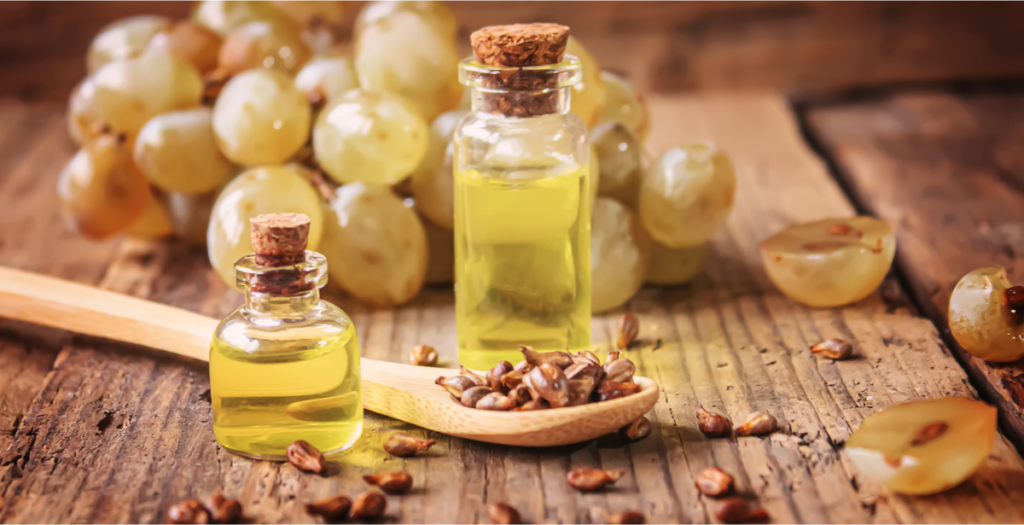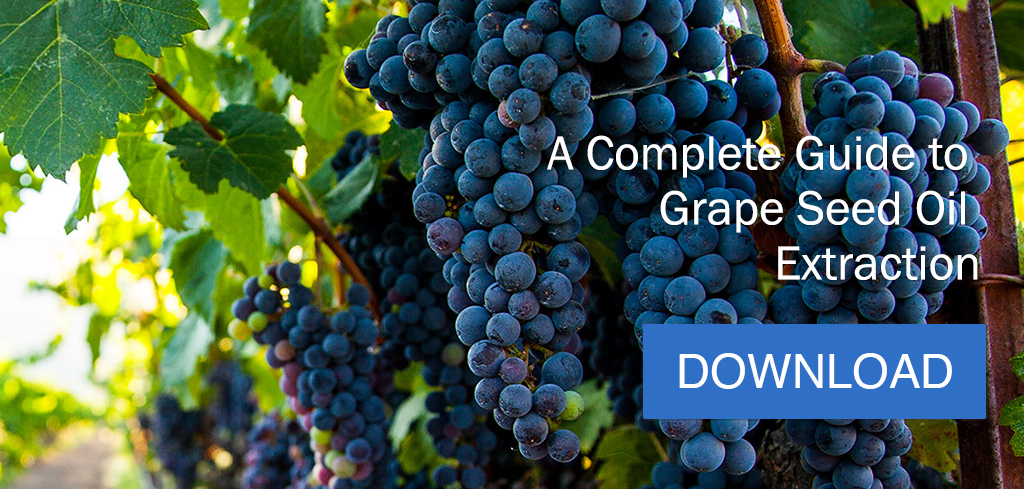
Although grapes are one of the most popular fruits in the world, most grapes are grown not to supply produce stands but to produce wine. More than 60% of the global grape production is crushed every year to make vino—generating large amounts of leftover byproducts like grape seeds, skins, pulp, and other residues. Of these winemaking byproducts, the seeds hold the greatest potential in terms of grape seed oil extraction.
Many of the beneficial compounds and antioxidants found in grapes are concentrated in the seeds, making them a valuable source of healthy oil to supply various industries, from food to personal care. However, since these tiny seeds contain such small amounts of fat, extracting the oil efficiently is the key to profitable processing. And since the fatty acids present in grape seed oil are highly sensitive to heat, controlling the processing temperatures can be challenging.
To tap into this valuable fat source, processors need to understand the challenges of grape seed oil extraction.
From vine to wine
Civilizations have been growing grapes and making wine for centuries, dating back to 5400 BC. Popularized during the ancient Greek and Roman empires and predominantly grown by monks throughout the Middle Ages to make wine for religious ceremonies, grapes eventually spread around the globe as the general population acquired a taste for wine.
Today, grapes are cultivated on nearly every continent across more than 7 million hectares of vineyards, concentrated throughout Europe and China. More than 1,000 varieties of grapes are grown today, all originating from the common grapevine, Vitis vinifera, native to the Mediterranean region. These climbing vines produce clusters of berries ranging in color from green and yellow to red, purple, and black. The seeds of sweet white grapes usually contain more oil (up to 20%) than black varieties, which may contain as little as 6% fat by weight.
After ripe wine grapes are harvested from the vine, the processing steps may differ, depending on whether they’re being used to produce white or red wine.
When making red wines, grapes are first separated from the cluster through a process known as destemming. This step may be combined with crushing to break open the grape skins and release the juice inside, creating a pulpy mixture called the must. Natural yeasts in the grapes and air begin to ferment this must, converting sugars into alcohol over a period of one to four weeks. Winemakers may add additional yeast to control this reaction. After fermentation, the wine is drained or pressed from the must and then clarified and bottled.
When making white wines, some winemakers may feed whole clusters of grapes directly into the wine press to quickly separate the juice before it can absorb the colors and tannins from the skins and seeds. Others might press the must immediately after crushing the grapes to separate the juice before it begins to ferment.
After the wine is drained or pressed from the must, the remaining pulpy mixture of grape seeds, skins, and other residues is called pomace. This valuable byproduct, once considered a waste material, is where grape seed oil extraction begins.
Also Read: Maximize Your Oil Yield with Anderson
Grape seed oil extraction
Once it arrives at the oil mill, the pomace is washed with hot water to obtain an alcoholic liquid that can be distilled to produce industrial-grade ethanol or food-grade ethyl alcohol. The remaining pulp is screened and sieved to separate the tiny seeds from the rest of the residue. Compared to other oilseeds that need to be cracked, shelled, or flaked before pressing, grape seeds require relatively minimal pretreatment.
Grape seeds are often cooked and dried to prepare the material for extraction by rupturing the cell walls to release the oil inside. However, the polyunsaturated fatty acids in grape seed oil are highly heat sensitive, so high roasting temperatures can destroy beneficial components like antioxidants and even cause the formation of harmful compounds.
To preserve these beneficial nutrients, cold pressing is often the preferred method of grape seed oil extraction. This method skips the cooking and drying steps and feeds raw grape seeds straight into the expeller press. Since the seeds haven’t been conditioned, the press has to work even harder to squeeze out all the oil using only mechanical pressure.
The Anderson Super Duo™ Series Expeller® can help processors overcome this challenge. Its unique dual-press design provides the extra torque to crush more oil from the seeds in a single pass. There’s no external heat applied during the cold pressing process, so the oil only reaches a maximum temperature of about 40 degrees Celsius (104 degrees Fahrenheit) due to the frictional heat generated by the press — which isn’t hot enough to destroy the beneficial compounds.
Unlike solvent extraction, which uses toxic chemicals like hexane to dissolve the oil from the seed, mechanical pressing doesn’t involve any chemicals — making expeller-pressed grape seed oil fit for human consumption.
Read more about Anderson’s Expeller: Inventing the First Continuous Mechanical Screw Press
Grape seed oil applications
Grape seeds contain many beneficial phenolic compounds like tannins, resveratrol, quercetin, and other phenols that possess anti-inflammatory, antioxidant, antimicrobial, and even antitumoral or anticancer properties. These compounds may help protect against disease, inflammation, wrinkles, and scars, but many existing medical studies examine the health effects of concentrated extracts rather than grape seed oil. While more research is needed to understand precisely how grape seed oil impacts human health, this fat source already shows promise as a popular ingredient in both food and pharmaceutical formulations.
For example:
- Grape seed oil emulsifies well, which makes it useful in salad dressings and mayonnaise.
- Its neutral flavor profile makes grape seed oil a versatile addition to any dish, replacing saturated fats with polyunsaturated fats.
- The antioxidant and antimicrobial compounds in grape seed oil help protect and repair the skin, making it a popular ingredient in skin care products and moisturizers.
As grape seed oil extraction methods continue to advance, grape seed oil is gaining popularity across various industry sectors.
The growth of grape seed oil extraction
More than 80 million metric tons of grapes are grown around the world each year. The global grape market is expected to generate more than $200 billion this year, rising to more than $283 billion in the next five years. Last year, the winemaking industry produced 258 million hectolitres of wine, creating large amounts of byproducts like grape seeds ripe for extraction.
The global grape seed oil extraction industry generated over $511 million last year, projected to reach $650 million by 2026. To keep up with the growth potential of this market, processors need to optimize their approach to grape seed oil extraction with efficient cold pressing equipment that can extract as much oil as possible while preserving all the bioactive compounds.
By leveraging Anderson International’s specialized oil extraction equipment and seasoned expertise, processors can position themselves for success as the global grape market continues to grow. To learn more about grape seed oil extraction, download Anderson’s guide.

